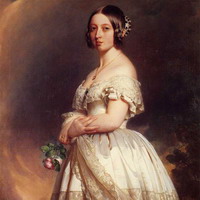Login form
Queen Victoria

Have you ever pretended that you were royalty? Sometimes in history, a child or a teenager has actually become a king or queen. One such case happened in 1837, when King William IV of Great Britain died and the crown passed to his 18-year-old niece, Alexandrina Victoria. Suddenly, the teenager became Queen Victoria, ruler of the British Empire.
For the next 63 years, Victoria ruled over a growing empire that included Canada, Australia, New Zealand, India, and parts of Africa. Victoria ruled longer than any monarch in British history. These years became known as the Victorian era.
VICTORIA’S CHILDHOOD
Victoria was born May 24, 1819. Her father, a son of King George III, died when Victoria was only eight months old. Growing up in London, Victoria studied history, geography, religion, French, German, painting, and piano.
VICTORIA’S DUTIES AS QUEEN
By Victoria’s time, British kings and queens had little real power in the government. The prime minister and Parliament ran the empire. But Victoria had strong ideas about how things should be run, and she met regularly with her prime ministers. She appointed ambassadors and, as head of the Church of England, selected bishops (chief priests). She also performed many ceremonies, such as the official beginning of a new session of Parliament.
Victoria’s most trusted prime ministers included Lord Melbourne, who taught the young queen about government, and Benjamin Disraeli, who expanded and strengthened the British Empire.
DID VICTORIA HAVE A FAMILY?
In February 1840, Victoria married her German cousin, Albert. Prince Albert supported arts, education, science, and industry in Britain. He also organized a world’s fair, the Great Exhibition of 1851, at the Crystal Palace in London.
Victoria gave birth to nine children between 1840 and 1857. The royal family often traveled to Scotland for quiet time together.
Victoria’s happy family life ended when Albert died in 1861 at age 42. The queen’s grief shut her away from public life for nearly ten years. Victoria kept working with her government ministers, but people rarely saw their queen. Her popularity began to drop.
THE QUEEN’S LATER YEARS
During the 1870s, Victoria began returning to her public duties. Her children married into royal families across Europe, including Spain, Russia, Prussia (Germany), Sweden, and Norway. This earned Victoria the unofficial title, “Grandmother of Europe.”
In 1897, the British Empire honored 60 years of the queen’s reign with a Diamond Jubilee celebration. Victoria died on January 22, 1901. She left Britain one of the world’s most powerful nations. To her people, Queen Victoria represented patriotism, high moral standards, and devotion to duty and family.
Source: Microsoft ® Encarta

